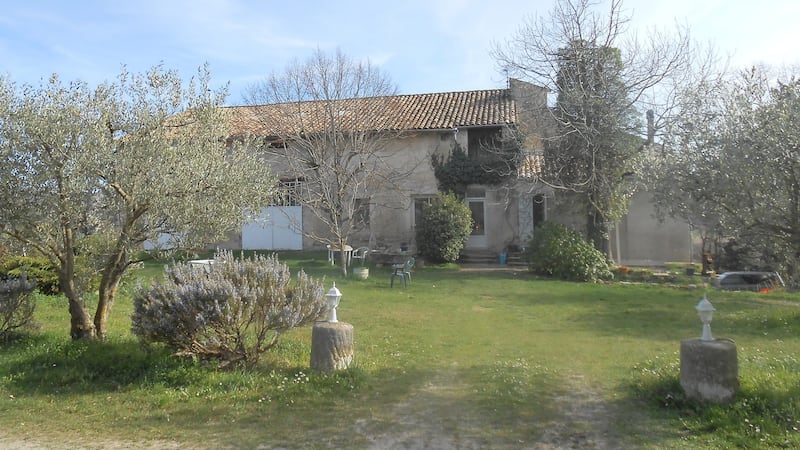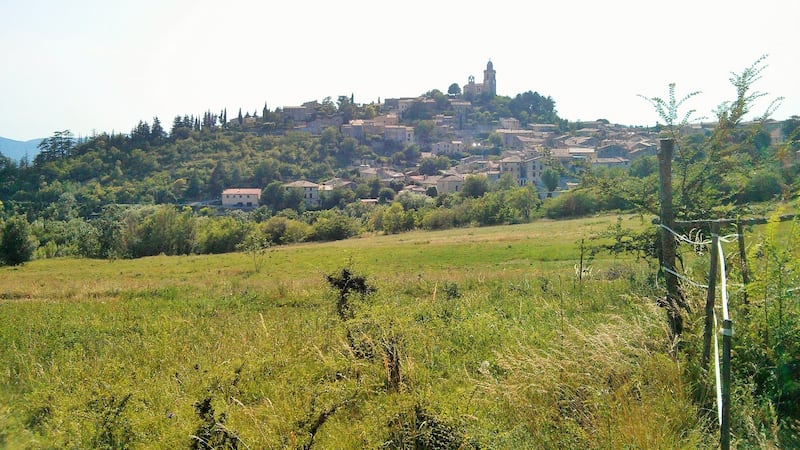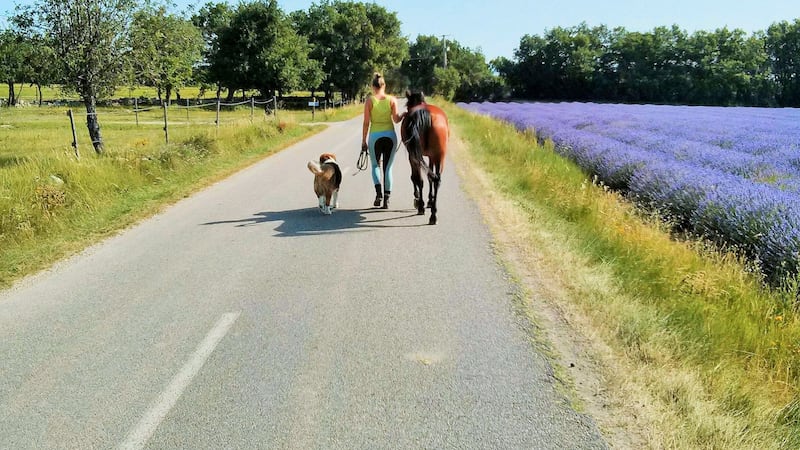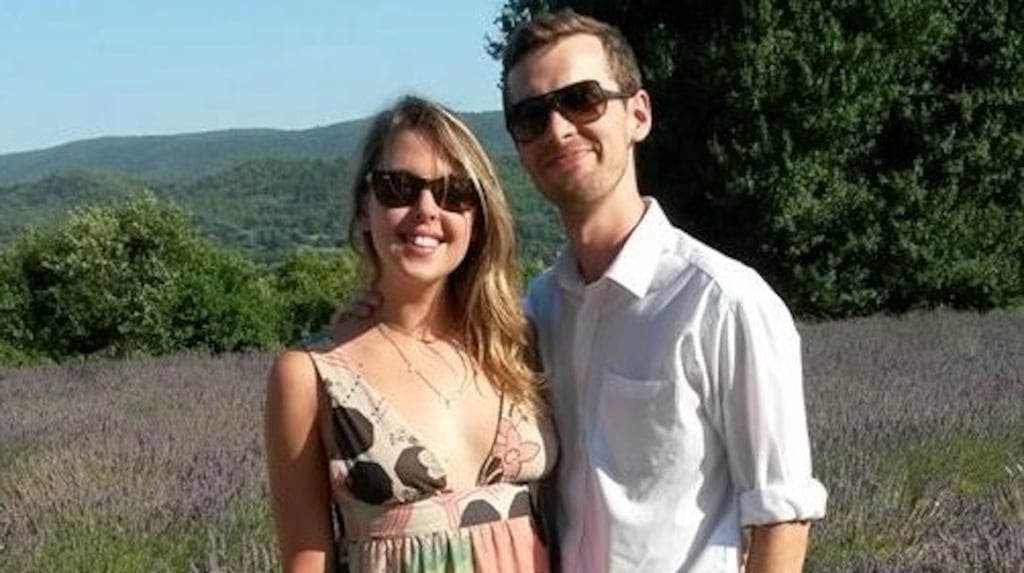It is late on a Sunday evening. I am walking into the arrivals lounge of Nice airport after a short, one-way Ryanair flight. My girlfriend, Virginie, is waiting for me, and together we drive three hours west, away from the tightly packed city lights and deep into the dark openness of the Luberon countryside.
Just outside of the small village of Reillanne (population 1,589) we pull off onto a narrow dirt road, lined with apricot and olive trees, which opens out into the garden of a large, beautiful old farmhouse.
In the centre of the garden is a stone well. To the right, I am told, are some steps leading up to a sprawling chicken-coop, although it is too dark to see them now, and to the left, just visible in the warm yellow light of a kitchen window, is a vegetable garden.
The house itself is tall, wide, stone-walled, and ivy-covered. It is at once impressive and hospitable. It invites a sense of history, security, and solidity. It has been part of the landscape forever, it seems, and it’s not going anywhere.

This is the house that Virginie grew up in, set amid fields of lavender and wheat that have been harvested by her family for generations. It had been through several incarnations (a granary, workers’ lodgings, a silk-wormery, and, eventually, left derelict) before her parents, in anticipation of their first child, recreated it as the family home it is today. While they did so, they stayed in an adjoining stone bungalow, which, once-upon-a-time, served as a groundskeeper’s lodgings. It is the four rooms of this abandoned bungalow that Virginie and I have decided to renovate into a home of our own.
The building shares a wall and a door with the family living room (where once thousands of silk-worms hung from the high ceiling’s rafters). Our plan is to close over the connecting door and effectively create a new, neighbouring, semi-detached house. We have already knocked down an interior wall, connecting what will be our kitchen to our future living room. The open plan will mean that more of the house will enjoy light from the large, sunset-facing window next to the living room fireplace. Of the remaining two rooms, one will be an office-cum-library (for writing and reading away idle summer afternoons) and the other our bedroom.
I am not the only person to have thought that relocating to the peaceful, unhurried French countryside would make for a nice change of pace. Sunny south France, the inspiration for some of the great impressionist artworks and books like Peter Mayle's A Year in Provence, has long attracted migrants from cooler climes. The slow paced, rural lifestyle appeals as the antithesis of hectic city life.

The cultural region of Provence is large, spread over more than 30,000km of coasts, forests, hills, and mountains. It has no shortage of charming villages, and prospective buyers looking away from popular house-hunting grounds, like student-town Aix-en-Provence, market-town Apt, or Mayle's Bonnieux and Ménerbes, find a far wider range of possibilities (and prices). Four-bedroom villas in coastal Marseille, the fertile Luberon, or the hills around Saint-Tropez are commonly listed at upwards of €1 million, but old mas (farmhouses) in need of a little renovation can be found near quaint settlements like Saint-Didiers or Saint-Cecile-les-Vignes for closer to €200,000. Small, unassuming, two-bedroom village houses can be found for as little as €100,000.
There are a handful of other migrants who have resettled here in Reillanne, including at least one Irish couple (in the great tradition of Irish interconnectivity we soon discover that the husband and I had both attended Wesley College). Most are retirees, with adult children, who enjoy their newfound freedom riding horses, photographing sunsets, and sipping rosé under clear, blue skies. They are generally welcomed by locals (providing they don’t impose unnecessary or inappropriate development upon the landscape), but also form a loose-knit community themselves, watering each other’s plants and feeding each other’s pets when visits home are called for. I’m told that Reillanne’s small population swells in the warmer months, when many more foreigners flock to summer properties and rented holiday houses.

Until our home is finished we are without a place of our own. On hearing about our situation (news travels fast in a village this size) a couple of American expats invited us to housesit for them during their three-week vacation. Although they live in a relatively new house, the wooden rafters, stone fireplace, and tiled roof all pay homage to the Provençal aesthetic.
From any of the gently sloping hills surrounding Reillanne, the village can be seen in its entirety. It is draped over a gently curved hilltop, and is crowned by an old bell-tower that measures out life in half-hourly chimes. The village square, venue for the weekly market and the occasional spectacle, lies in a dip, giving the centre an amphitheatre feel. At the village boundaries its sand-and-rust coloured homes blend seamlessly with open fields and woodland. Beyond that there seems to be nothing but thickly forested hills until the broad, snow-topped Alps on the horizon.
While working on the house, I have been fortunate enough to get to know Virginie's family better. They are a typical Provençal family; warm, unhurried, and resourceful. One evening a local farmer dropped over a few litres of surplus milk. We began the lengthy process of turning it into cheese. As I write, the cheese is ageing in the cellar, next to tubs of handpicked olives soaking in brine, jars of homemade preserves (Grandma's recipes, of course), and honey collected from hives less than 500m away. The evening represented some of the things that have impressed me most, as somebody raised in the city, about the Provençal lifestyle; neighbours actively sharing instead of avoiding accidental eye contact, families creating their own produce instead of arguing over who to send to Lidl, cellars full of homemade foodstuffs instead of freezer-drawers full of pizza; surely this was a better way of life?
Every day I count my blessings. To create a home here is a dream shared by many, and for good reason; Provence is a slice of paradise. The calm might have bored me were I just a little younger, but I’ve seen enough of the world by now to know how rare and valuable a place like this can be. À bientôt.
This is the first of an occasional series on the Irish abroad and where they live

At Home Abroad
Are you living abroad? If so, we’re interested in hearing stories about the homes you live in to feature in Abroad online and also in the Home&Design supplement of The Irish Times.
If you would like to contribute, we're looking for stories of around 500 words that describe your home and how you live in it. And can this link be added - Read more here: http://www.irishtimes.com/life-and-style/abroad/at-home-abroad-send-us-your-stories-about-where-you-live-1.3005377












